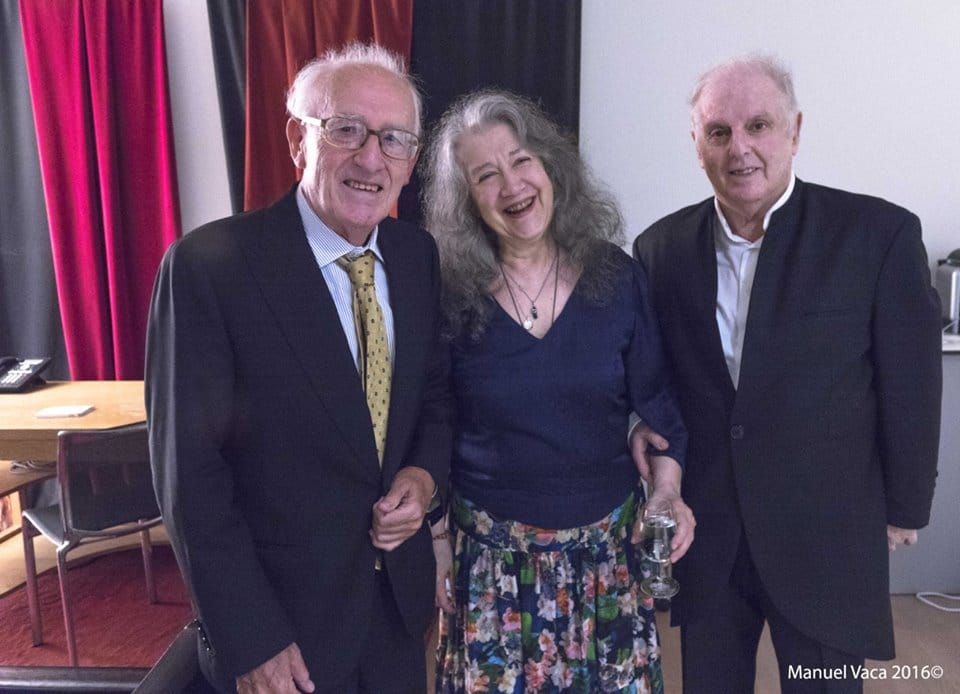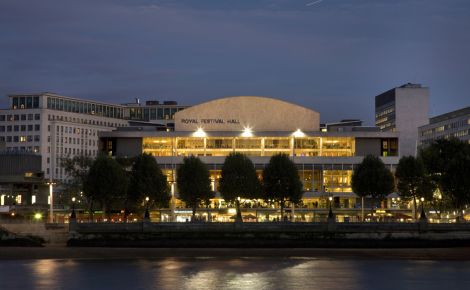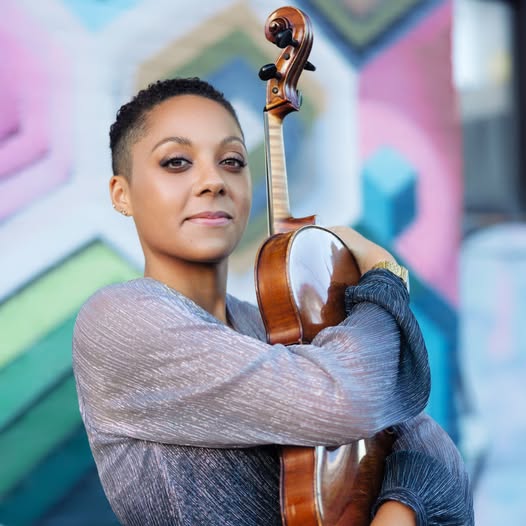When you’ve played Beethoven together for 65 years, something happens
mainWelcome to the 43rd work in the Slipped Disc/Idagio Beethoven Edition
1st piano concerto, opus 15
This is where chronologies can get confused. The first piano concerto, in C major, was written after what is now known as the second, the one in B-flat major. There was a prior piano concerto, which he abandoned, so the numbering is meaningless. This ‘first’ concerto is the one he began soon after arriving in Vienna, writing it under such pressure that ‘two days before the performance […] four copyists sat in the hallway working from the manuscript sheets that he handed over to them one at a time.”
The first performance was given in Vienna on December 18, 1795 with the composer as soloist. It was acclaimed as the best since Mozart, but Beethoven was not satisfied and started tinkering. He wrote extra pages and enlarged the orchestra with clarinets, trumpets and timpani. He gave another premiere at Prague in 1798, with different solo cadenzas. Then he made further changes, not submitting the score to a publisher until 1801. The slow movement proved to be the longest he would ever write for a concerto and the finale is a runaway train that threatens to crash into the next bridge. Although his B-flat major concerto was by now justly popular, this replaced it as the first in the publishers’ catalogues. The various manuscripts, some lost, would prove a nightmare for latterday scholars and it remains impossible to say which represents the final thoughts of a composer who was also the soloist in many early performances.
Although he sticks to the Haydn-Mozart formula of maintaining separate narrative lines for pianist and orchestra, with very little interplay or provocation, he makes the striking decision to remove the flute and oboes from the middle movement, leaving the relatively novel clarinet to lead the winds. It’s decidedly new, but not yet challenging in the way he becomes as the century turns.
In an archive of 100 recordings, Martha Argerich stands out as having spent more studio time with this concerto than anyone else, starting in 1983 with Seiji Ozawa in Munich and continuing to the present day. At one point, Argerich played no other concerto for more than a year, and still protested that she had yet to get to grips with this one. I have heard her both live and recorded. The performance I like best is the one she gave in 2015 with Daniel Barenboim‘s West-East Diwan orchestras of young players from across the Middle East. As kids of eight in the 1940s, Argerich and Barenboim used to go with their parents every Friday night to a rich man’s house in Buenos Aires where they would play piano for a while to amuse the grownups during cocktail hour before being let loose on the best food they saw all week. The understanding between these two artists is lifelong, surpassing the normal give-and-take of conductor-soloist relationships. Barenboim, as conductor, allows Argerich to breathe as the spirit moves her; she, in return, allows him into her spiritual world. This is a gripping piece of musical theatre and a true summit of Beethoven performance.

The oldest extant recording is by Wilhelm Kempff with the Staatskapelle Berlin in 1925. The orchestral sound is appalling, but the young pianist commands attention in the middle movement with a playful teasing out of Beethoven’s long lines, daring the clarinet to run out of breath. There’s a second recording of great serenity, taken with the Berlin Philharmonic in 1953, with Paul Van Kempen conducting, but the best of Kempff is to be found in his imperious 1961 account with Ferdinand Leitner and the Berlin Phil, for which the solost, a part-time composer, also wrote his own cadenzas.
The next question any reviewer has to face is: Gilels or Richter? The Soviet antipode pianists recorded both inside Russia and in western Europe. Although the Russian sound quality is inferior, the stylistic freedom is often greater and the ambience more powerful. Emil Gilels with Kurt Sanderling in 1947 somehow conveys the existence of music as an island haven in the throes of Stalin’s Great Terror. Sviatoslav Richter, with the same benign conductor in 1952, is almost capricious: kill me if you can, I’m playing it my way. Richter’s great western recording was with Charles Munch in Boston 1961, in a world of his own, almost static in the slow Largo. Gilels recorded in London with Adrian Boult, in Paris with André Cluytens and André Vandernoot and in Prague with Sanderling. His most personal account is with George Szell and the Cleveland Orchestra in 1966 for EMI, the patter of his fingers on the keyboard shutting out the menace of his times.
The Italian magician Arturo Benedetti Michelangeli, conducted in Vienna in 1980 by Carlo Maria Giulini, cuts loose in the finale, haring away from the orchestra at suicidal speeds. Mitsuko Uchida, the perfect contrast, is too well brought up to run away. Instead, she holds back Kurt Sanderling and the Bavarian radio orchestra to play at her pace, perfectly composed, a soloist’s prerogative. The Polish Hungarian Piotr Anderszewski (2008) is impossibly fast and the Deutsche Kammerphilharmonie Bremen unpleasantly loud. Lang Lang (2007), with Christoph Eschenbach and Orchestre de Paris, offers nothing here to the history of interpretation.
My New York friend Steve Rubin, who knows more about Brahms’ first concerto than any man alive, swears by Glenn Gould in this concerto, the 1958 Golschmann performance for Columbia
rather than the prior Canadian concert recording. Others, no doubt, will swear at Gould. He can be more infuriating than anyone, overriding the metronome with dangerous speeds and never looking either side at crossroads. Somewhere around 06.15 in the finale he hits a barrier of near-atonality. You never know what to expect with Gould. That’s what makes him so exciting, even when he’s just doing it for effect.
Gould wrote some cadenzas for this concerto but never recorded them. Lars Vogt did, with Simon Rattle in 1996. Definitely worth a visit.
Arrau, Brendel, Uchida, Gulda, Pollini and Leon Fleisher are all hotly recommendable, and if you want a fortepiano reading look no further than Ronald Brautigam. Before you give up on modern performers, you must here one of the most recent recordings, by the young Canadian Jan Lisiecki, standing in for an injured Murray Perahia. Lisiecki has a hypnotic singing line in the first two concertos, no historical controversies, no agendas, just music for music’s sake. You won’t be disappointed.
Pollini, Argerich, Barenboim





Comments